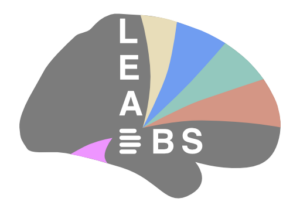Tagged: plot, visualization
-
AuthorPosts
-
08/27/2014 at 10:19 AM #253
Petra
ParticipantHello Andy,
we are interested in visualizing only the ventral contacts of our subject and are considering to make 2d plots besides from a 3D plot to display the linear relationship of the contacts’ locations on a specific axis with our dependent variable.
One plan is to plot all 3 planes and the slices displaying the STN, SNr, etc. at the average x/y or z-coordinate of all our electrodes. Do you have any recommendations on how to do this best? In principle, I want to plot the outlines of the structures (and labels) as is already done in the 2d plotting function without the MR scan (or rather with a standard MNI brain not an individual patient) but need this in a scale (i.e. with a coordinate system), which I can use to overlay the coordinates of all the other electrodes.
Or is there an option to plot only the outlines of the 3D objects in the 3D plot? This wouldn’t depict the shape of the structures at the average slice but the whole size of e.g. the STN from that view, which would also be fine, I think.
Or is this maybe easier done in other software, e.g. Slicer?I am also not sure about how the 3D visualization will look best on a 2d plot. Once 3D rotations are not available anymore, I think it is quite hard to recognize the position of single points as we want to represent only the ventral contacts (and plotting all electrodes of 13 patients would look too crowded).
I am looking forward to any suggestions!
Best,
Petra08/28/2014 at 5:45 PM #254andreashorn
KeymasterDear Petra,
I will sooner or later write a function that is able to plot group results in 2D, but as you, I am not sure, how best to do so. What you could do in the meantime is load the contacts as fiducial points in slicer and load up an MNI template to visualize the whole thing.
You can also use the Lead 3D-viewer and in the axis panel select e.g. X-Cut instead of 3D view. It will then simply crop the 3D-figure to a cut. You can select to display electrodes as point clouds only in lead_group and could even tell the program to only show the ventral contacts by making them the only “active” contacts.
lead_group is still quite complicated, so we could maybe best skype briefly to do so together, if you’d like to try that.Yours, Andy
08/28/2014 at 6:34 PM #255Petra
ParticipantDear Andy,
thank you for your suggestions and offer to skype! I think I will just plot the structures, store it as .fig and then load it to plot my contacts subsequently into this 3d figure with the usual MATLAB plotting function because we need them to be colored according to a separate dependent variable. The X-Cut view sometimes looks a bit strange (not all nuclei are displayed), I will probably just generate the outlines of the structures in Inkscape once I have the 2D views of the plot.
Thanks again,
Petra -
AuthorPosts
- The forum ‘Support Forum (ARCHIVED – Please use Slack Channel instead)’ is closed to new topics and replies.

